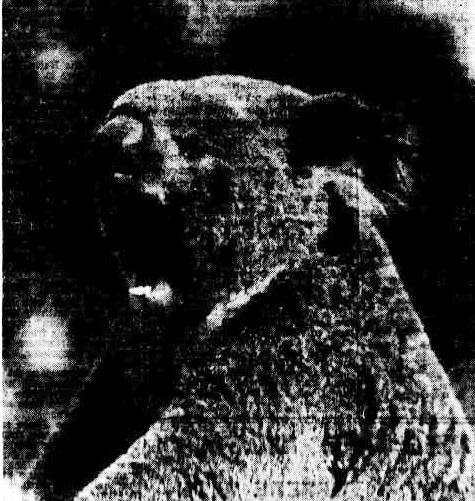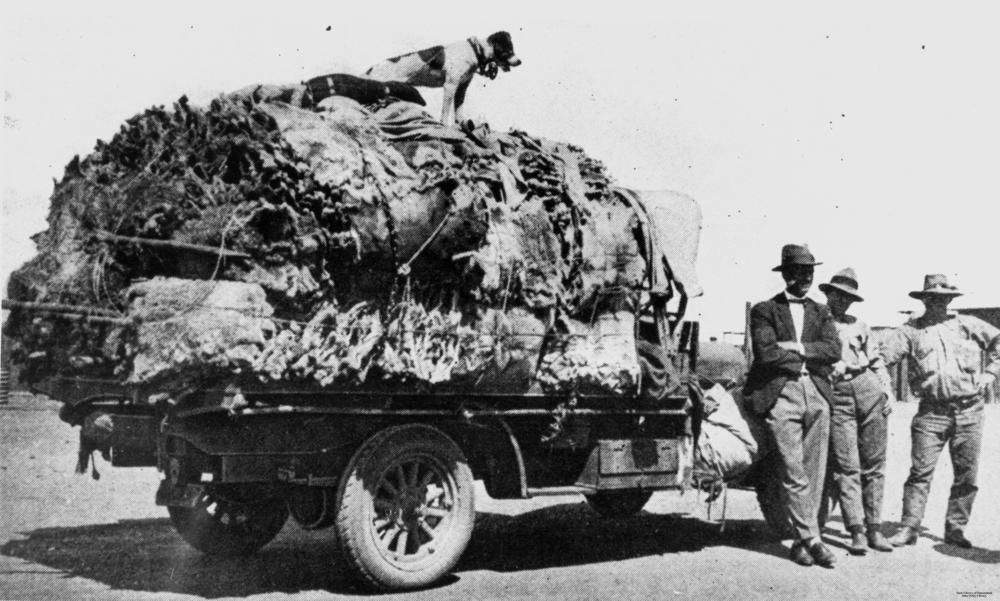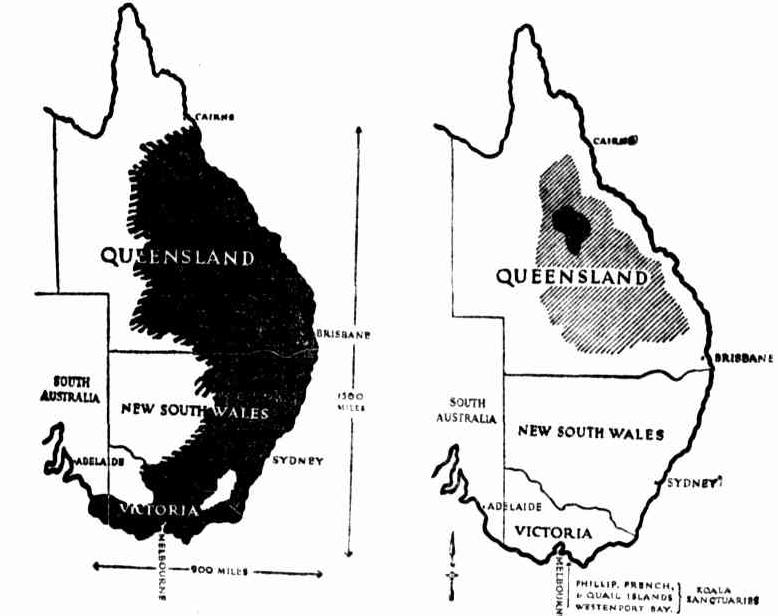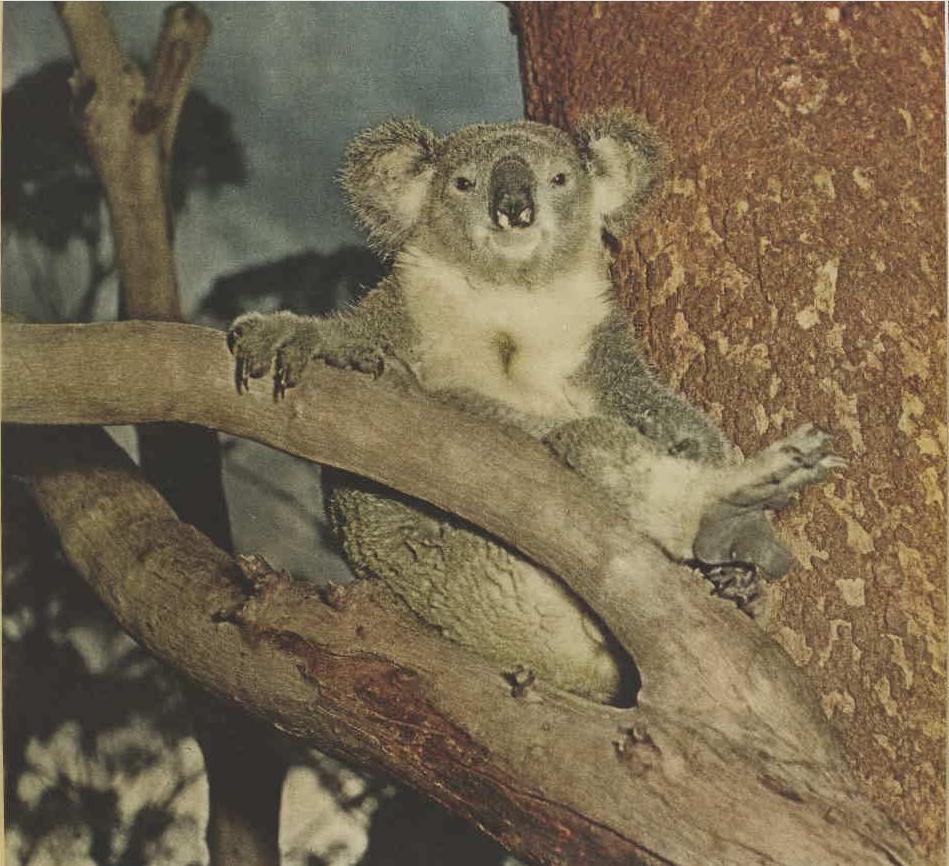Koalas Now Listed As Endangered in NSW - Qld - ACT
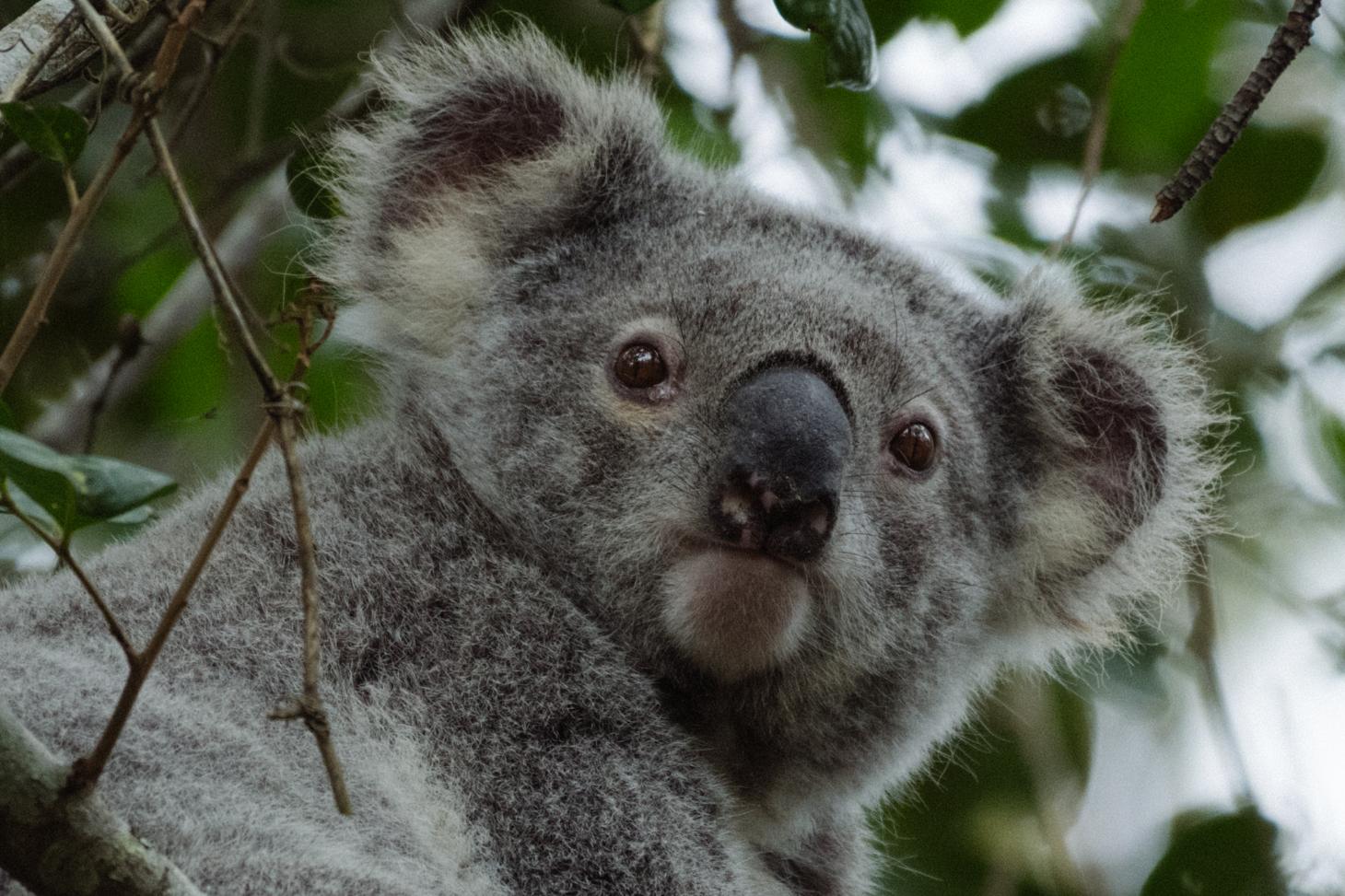
The Federal Government is boosting the level of protection for Koalas under National Environmental law, and will this week seek agreement from Queensland, New South Wales and the Australian Capital Territory on the National Recovery plan. On Friday February 11th 2022 their listing was changed from 'vulnerable' to 'endangered'.
The decision is welcomed by Pittwater residents, who witnessed their local population become extinct by the late 1980s, through dog attacks, habitat destruction and placing unsurmountable obstacles such as, in one instance, building a retirement village to block their passageway from food trees at south Avalon to north Avalon.
Minister for the Environment Sussan Ley said “We are taking unprecedented action to protect the koala, working with scientists, medical researchers, veterinarians, communities, states, local governments and Traditional Owners,” Minister Ley said.
“As part of our $200 million bushfire response, I asked the Threatened Species Scientific Committee to consider the status of the Koala.
“Today I am increasing the protection for koalas in NSW, the ACT and Queensland listing them as endangered rather than their previous designation of vulnerable.
“The impact of prolonged drought, followed by the black summer bushfires, and the cumulative impacts of disease, urbanisation and habitat loss over the past twenty years have led to the advice.
“Together we can ensure a healthy future for the koala and this decision, along with the total $74 million we have committed to koalas since 2019 will play a key role in that process.
“The new listing highlights the challenges the species is facing and ensures that all assessments under the Act will be considered not only in terms of their local impacts, but with regard to the wider koala population.
“The National plan developed through scientific advice and public consultation will now go to the relevant states for their final adoption and will help guide state and local government strategies.”
The decision follows a joint nomination by the International Fund for Animal Welfare (IFAW), Humane Society International (HSI) and WWF-Australia in April 2020 to Australia’s Threatened Species Scientific Committee.
Koalas in Queensland, New South Wales and the Australian Capital Territory will now be classified as Endangered under national legislation and will gain elevated protections. The decision also recognises the koala is one step further along the pathway to extinction.
“Koalas are an international and national icon, but they were living on a knife edge before the Black Summer bushfires with numbers in severe decline due to land-clearing, drought, disease, car strikes and dog attacks. The bushfires were the final straw, hitting at the heart of already struggling koala populations and critical habitat,” IFAW Oceania Regional Director Rebecca Keeble said.
“This decision is a double-edged sword. We should never have allowed things to get to the point where we are at risk of losing a national icon. It is a dark day for our nation. If we can’t protect an iconic species endemic to Australia, what chance do lesser known but no less important species have?
“This must be a wake-up call to Australia and the government to move much faster to protect critical habitat from development and land-clearing and seriously address the impacts of climate change.”
The nomination was submitted on the basis of two scientific reports which revealed Queensland’s koala population crashed by at least 50% since 2001 and up to 62% of the NSW koala population has been lost over the same period.
IFAW also welcomed the federal government’s recent $50AUD million pledge for koala recovery and habitat restoration.
“These actions are vital to ensure the survival of the species into the future, but without addressing the root cause of their decline which is habitat loss and climate change, we are just plugging holes in a sinking ship. We must do everything possible to implement the plan and save this iconic species,” Ms Keeble said.
In January 2022, the Australian Government announced an additional $50 million over 4 years to maintain and support the recovery and conservation of the Koala through monitoring, the protection of Koala habitats, and the improvement of Koala health and care in response to natural disasters such as bushfires and diseases including Chlamydia.
This funding injection builds upon the $18 million Koala conservation package announced in 2020, which includes $14 million in bushfire recovery funding, given the impact of the 2019-20 bushfires on the species and its habitats.
The additional $50 million Koala investment includes:
- $20 million in grants and procurements for larger projects led by Natural Resource Management groups, NGOs, and Indigenous groups, as well as state and territory governments to build on existing work, guided by the outcomes and findings of the National Koala Monitoring Program.
- $10 million to extend the National Koala Monitoring Program to fill critical knowledge gaps and increase the use of citizen scientists
- $10 million in grants for small-scale community projects and local activities such as habitat protection and restoration, managing threats, health and care facilities, and citizen science projects
- $2 million in grants to improve Koala health outcomes through applied research activities and the practical application of research outcomes to address fundamental health challenges such as Koala retrovirus, Koala herpes viruses and Chlamydia
- $1 million to expand the national training program in Koala care, treatment and triage
The $18 million Koala Conservation package (to June 2022) includes:
- $10 million to support habitat restoration and threat mitigation in bushfire-affected regions of New South Wales and south-east Queensland
- $2 million for Koala protection and recovery at additional sites identified from the Investment Framework for Environmental Resources (INFFER) workshops held in northern New South Wales (funded under the Environment Restoration Fund)
- $2 million for habitat restoration and threat mitigation in other non-bushfire affected regions of central and western New South Wales and central Queensland(funded under the Environment Restoration Fund)
- $2 million for a Koala Health Initiative to support coordination and delivery of more effective health research and to support Koala veterinary activities
- $2 million for a National Koala Monitoring Program to produce a robust estimate of the national Koala population and fill key data gaps identified through the Koala re-assessment and recovery plan development process.
In addition, Australian Government commitments to the Koala under the Environment Restoration Fund include:
- $3 million to support Koala hospitals in south east Queensland (announced in December 2019)
- $3 million to support habitat restoration in northern New South Wales and south east Queensland (announced in November 2019).
The Save Sydney's Koalas group, which has a focus of trying to save the south-west Sydney’s koalas population, the only chlamydia-free Koala population of any significant size in NSW, asked, on hearing of the announcement;
''Will this be a game changer for Campbelltown Council, NSW Government, developers including Lendlease , Walkers, and super companies Australian Ethical Investments who continue to participate and invest in Koala destruction?''
''Despite the draft national koala recovery plan describing the Campbelltown koala population as one of only two large, expanding, and Chlamydia free populations left in NSW and the second one now being in decline because of drought and Chlamydia, bulldozers are still destroying their habitat and wildlife corridors here.
Neither Sussan Ley nor the NSW government has done anything to protect them and in fact, BioCertification credits from Mount Gilead were sent to west Appin near Douglas Park and Fernhill near Mulgoa. Landcom, Lendlease, and Walkers are systematically eliminating koalas and other native species from the landscape.''
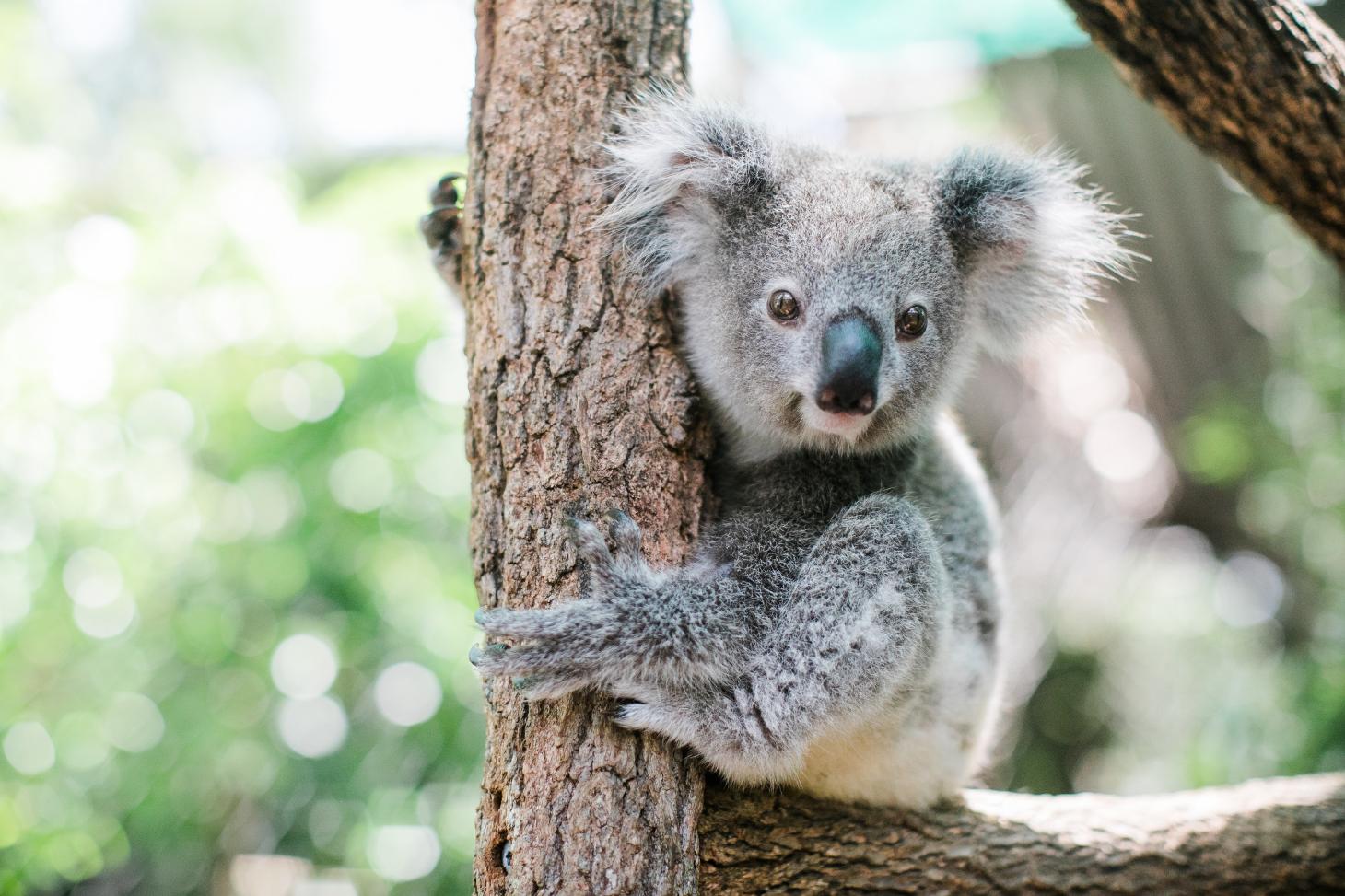
Morrison government spends $50 million saving koalas while taking away their homes
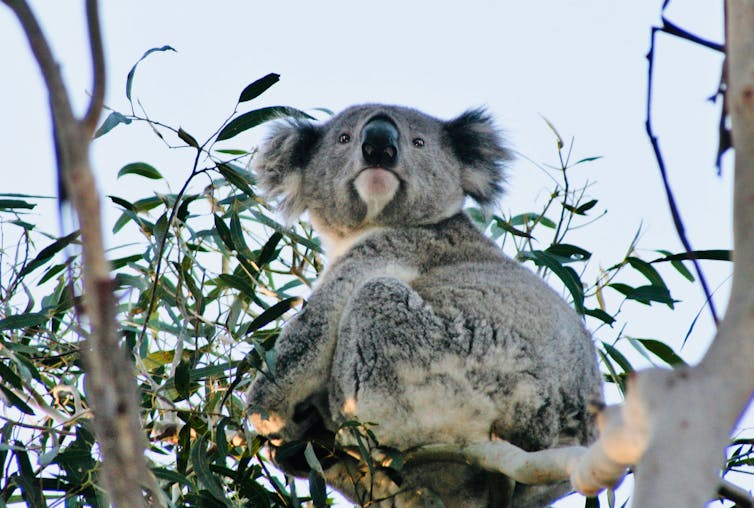
Federal Environment Minister Sussan Ley is reportedly poised to decide whether some koala populations should be listed as endangered, as new research shows her government continues to approve land clearing in koala habitat.
Analysis released by the Australian Conservation Foundation (ACF) on Tuesday found that in the decade since koalas were declared vulnerable to extinction, the federal government had approved the clearing of 25,000 hectares of the species’ habitat.
It follows the Morrison government’s announcement last month of A$50 million to restore koala habitat, monitor populations and research the animals’ health.
But until the problems of habitat loss and land clearing are addressed, national koala populations will continue to dwindle. And as our recent research shows, much of the new funding is inadequate at the scale required.
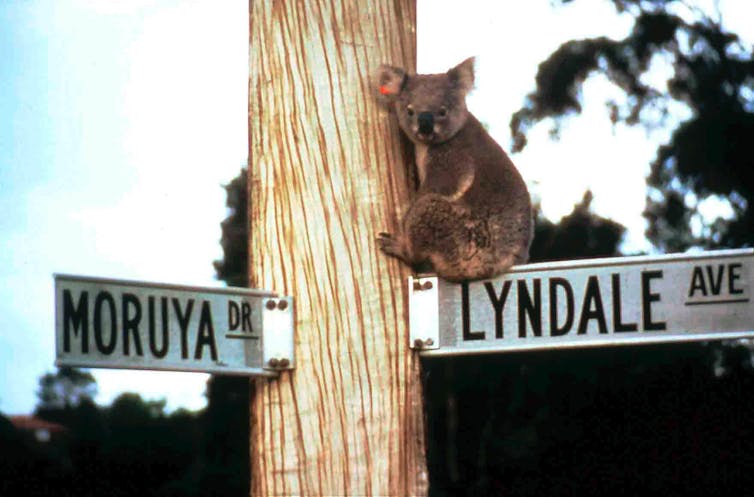
Koala cash-splash
The Threatened Species Scientific Committee, which advises the federal government, has recommended the status of koalas in Queensland, New South Wales and the ACT be upgraded from vulnerable to endangered.
Ley is expected to respond to the recommendation by next month. Listing the koala as endangered would be a serious escalation in its threat status.
The federal government’s recent $50 million of koala funding supports various initiatives. They include:
$20 million for large habitat and health protection projects delivered by Indigenous groups, industry, state and territory governments and non-government organisations
$10 million for community-led habitat restoration, health and care facilities, and citizen science projects
$10 million to extend the National Koala Monitoring Program
$2 million to fund applied research in koala health
$1 million to fund vet staff and koala care, treatment and triage.
These are important investments. But we see two major issues with the federal government’s approach.
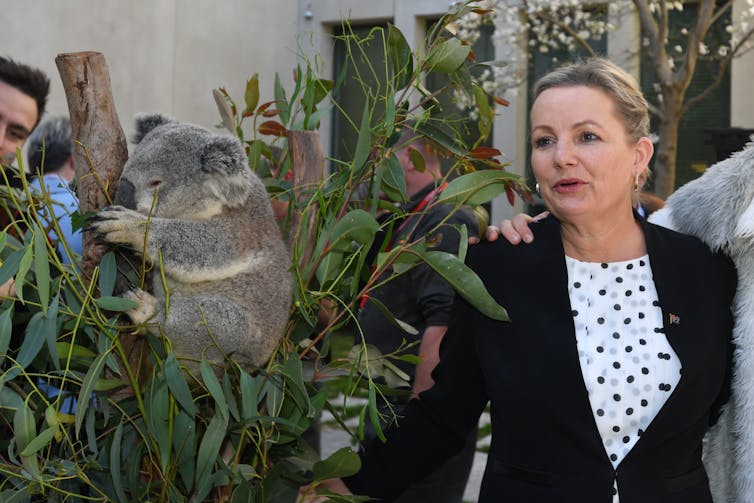
Habitat loss: the biggest problem
Until koala habitat is protected, conservation efforts – largely funded by the taxpayer – will continue to be undermined.
Other recent federal koala funding includes $24 million after the Black Summer bushfires.
The NSW government wants to double the number of koalas in that state by 2050. To that end, it pledged $193 million over five years in the current budget. This followed the $44.7 million of koala funding it announced in 2018.
All this comes on top of the millions of dollars in international and national community donations for koala conservation efforts after the Black Summer bushfires.
But the primary driver of koala population decline is the clearing of its habitat. No amount of money can save koalas unless we tackle this.
The ACF research released on Tuesday confirmed the extent of the problem. The federal government approved the clearing of 25,000 hectares of koala habitat in the past decade, comprising 63 projects.
Most were mining projects, followed by land transport and housing developments.
Two recent federal decisions demonstrate this active undermining of koala conservation efforts:
approval to clear more than 75 hectares of critical koala habitat for housing west of Brisbane, reportedly in breach of the government’s own policy
approval of the Brandy Hill Quarry, which would clear 52 hectares of koala habitat to produce gravel and stone.
These projects were also approved by respective state governments, and were enabled by weak koala protections under both national and state environment laws.
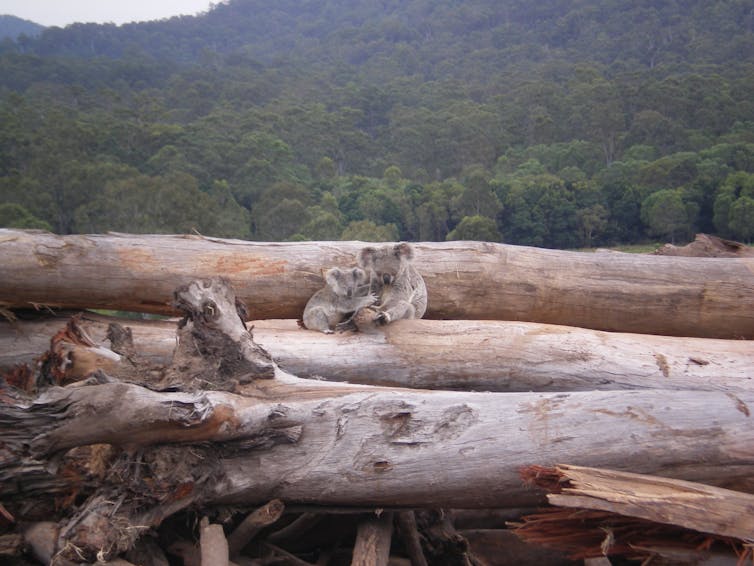
Barely scratches the surface
Second, the federal funding for koala monitoring is inadequate.
We recently modelled the costs of conducting large-scale koala population surveys with methods that could be incorporated into the National Koala Monitoring Program.
We examined the cost of surveying 1.9 million hectares of fire-affected places in NSW considered “high and very high suitability” koala habitat.
We put the price tag at $9.5 million to $11.5 million for on-ground techniques, or about $7 million for efficient and cost-effective drone thermal imaging.
That’s just for one survey round. Even if the 1.9 million hectares was fairly distributed to key sampling areas, which is likely, the surveys must still be repeated at regular intervals to monitor koala populations over time.
The latest funding announcement for the National Koala Monitoring Program brings the total to $12 million since the initiative was announced in 2020. Given the vast extent of the koala’s range across five states and territories, this monitoring funding barely scratches the surface.
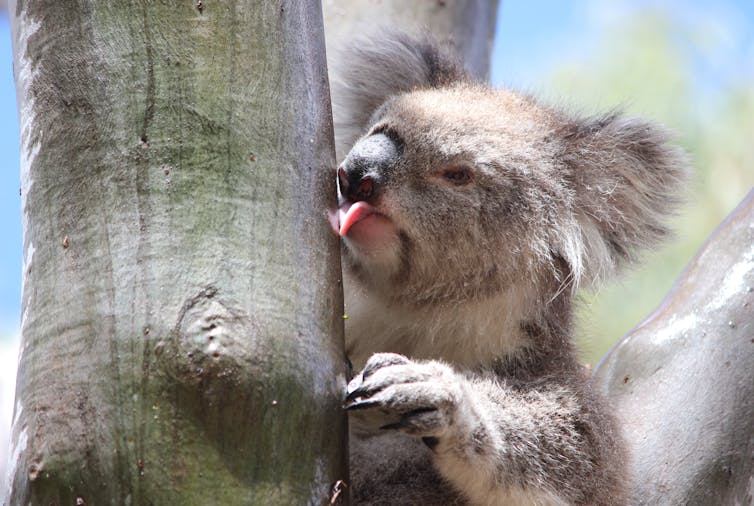
The federal government must step up
Koala conservation is largely funded by the taxpayer and koalas receive far more funding than other threatened species.
So it’s only fair to expect this funding to deliver results. To protect the important public and community investment in koalas, the federal government must:
review current funding levels and provide adequate investment to support all Australia’s wildlife, including koalas
endorse the expert recommendation to list the koala as endangered in parts of Australia
finalise the Draft National Recovery Plan for the koala, which has been pending since 2012
enforce strong protections for koalas and other native wildlife, with independent oversight. The measures should follow the recommendations in Professor Graeme Samuel’s review of federal environment law.
In this, an election year, the Morrison government has the chance to show Australians it’s committed to saving our threatened wildlife. ![]()
Lachlan G. Howell, Research Fellow | Centre for Integrative Ecology, Deakin University; Ryan R. Witt, Postdoctoral Researcher and Honorary Lecturer | School of Environmental and Life Sciences, University of Newcastle, and Shelby A. Ryan, PhD Candidate | School of Environmental and Life Sciences, University of Newcastle
This article is republished from The Conversation under a Creative Commons license. Read the original article.
a few extras:
January 2020 Pittwater Online Environment News: Koala Spotted In Belrose Area
- dog attacks - please keep your pets away from wildlife
- vehicles - slow down for wildlife particularly on Wakehurst Parkway, Mona Vale Road and Forest Way
- habitat destruction - over development on the NB is a major threat to our koalas and could eventually wipe them out.
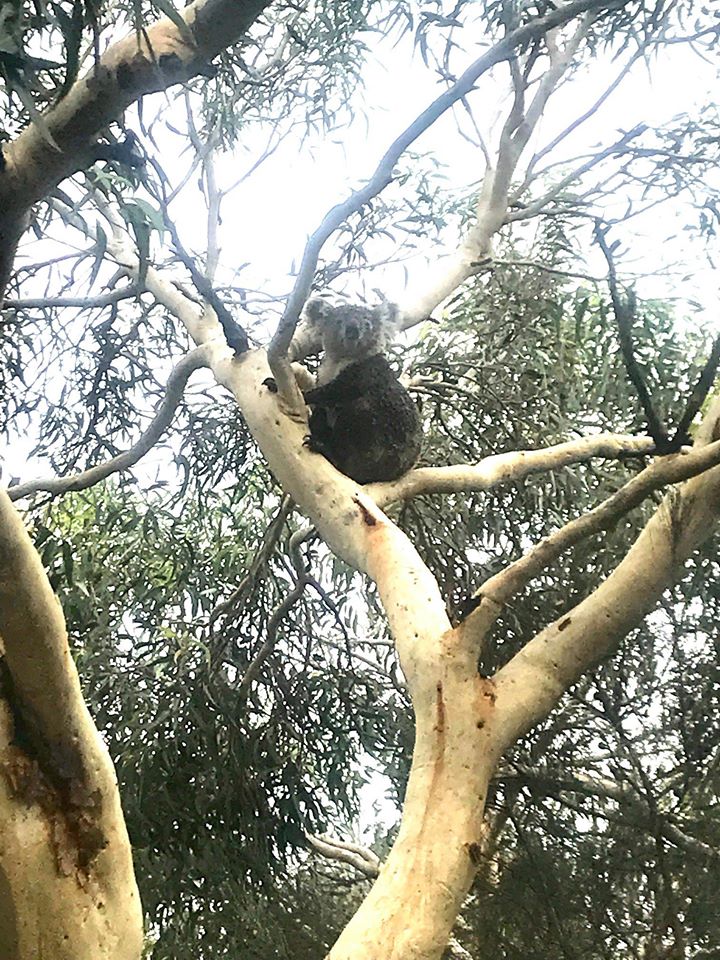
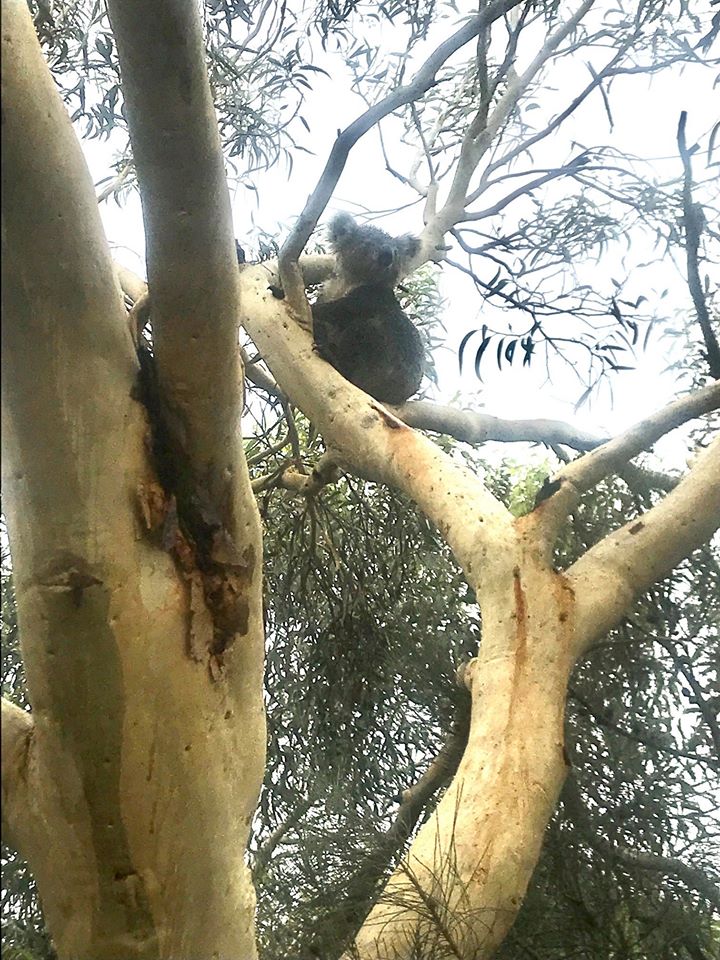
Bangalley Head - Careel House Koala Loves Music: 1937
The owners of Careel House, Bangalley Head, the Grieves had a Caesar and as the location of the home was one the local koalas moved to during their annual shifts from food trees in Angophora Reserve to that atop Careel Head- Bangalley Head, they also had koalas:
DOG wire haired Terrier white black markings (Caesar) Lost from Careel House Whale Beach. Reward Phone Palm Bench 77 or MA5076 GRIEVE 170 Elizabeth Street, City. Advertising. (1937, October 13). The Sydney Morning Herald(NSW : 1842 - 1954), p. 23. Retrieved from http://nla.gov.au/nla.news-article17415938
KOALA LIKES MUSIC
Koala Visits Guest House
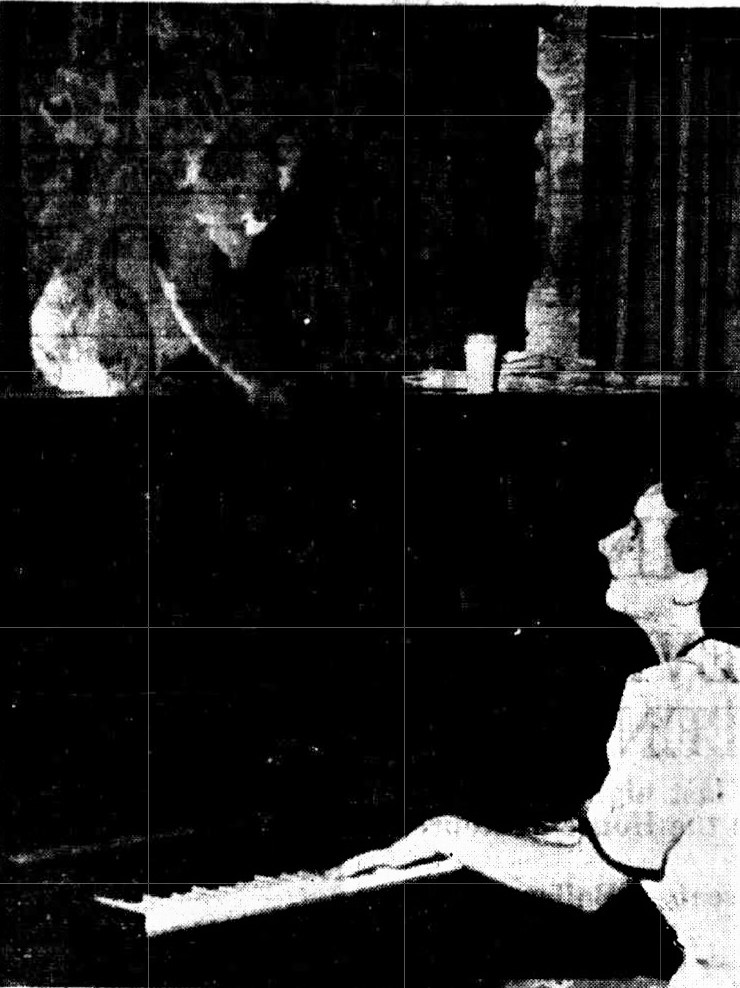
A koala bear last night paid a visit to Careel House, Whale Beach, near Avalon. In answer to persistent knocking shortly after 7 o'clock, the front door was opened, and guests were surprised to find the koala outside. Without inducement the animal entered the lounge, and immediately made itself at ease on one of the chairs. The picture above shows the bear quite at home on top of the piano, which is being played by a guest.
Mrs. C. B. Grieve, the proprietress, obtained a bunch of gum leaves, which the bear ate, unperturbed by the pattings and pettings of its admirers. Twice the "intruder" was placed on the terrace so that it might return to the gum trees which surround the house, but twice it demanded re-admittance. After a "visit" of nearly three hours, the bear consented to leave. KOALA LIKES MUSIC (1937, October 25). The Daily Telegraph (Sydney, NSW : 1931 - 1954), p. 2. Retrieved from http://nla.gov.au/nla.news-article247228753
More in Careel House
previously
- Summer Creature Features; Koala - Treed - 2012
- Bayview Koala Sanctuary - History feature, 2012
- Saving Ballina’s Koalas – Will Pittwater’s Mistakes Be Repeated? - March 2015
- Koala Plans Receive Federal Government Approval - Ballina Highway; Update deliberate Destruction of Koalas Chosen - August 2016
- More Than 2.2 Million Hectares Of NSW Koala Habitat Could Be Cleared - October 2016 Pittwater Online Environment News
- Koala Sighted In Kosciuszko National Park for first time in 70 years - December 2016 Pittwater Online Environment News
- Australia: Place Of The Culling Fields, Koala Skins for Profit - August 2017
- Pacific Highway Koala Holocaust: Koala habitat destroyed - October 2017
- Koalas Now Safer Thanks To New Pacific Highway Signs - Ballina Highway upgrade: 110 hectares of koala food trees planted, now they only have to NOT be hungry while they grow - February 2018
- Environment Groups Call On Premier To Halt Logging In Core Koala Habitat; Gladstone State Forest, near Bellingen - February 2018
- Berejiklian Government Allows Open Slather On Wildlife - March 2018
- Old Growth Forest Under Attack As NSW Government Winds Back Environmental Protections - May 2018
- New Analysis Shows Government’s Koala Reserve System Offers The Species Virtually No New Protection - June 2018 Pittwater Online Environment News
- Community Calls On Government To Put Koalas Before Developers For Once - Mount Gilead Development - June 2018
- Destructive Logging Laws Slammed By Government Scientists; 99% of koala habitat at risk from clearing - November 2018 Pittwater Environment News
- These Two Koalas Lost Their Mothers To Deforestation - December 2018 Pittwater Online Environment News
- As The Dust Of The Election Settles, Australia’s Wildlife Still Needs A Pathway For Recovery - May 2019
- A Report Claims Koalas Are ‘Functionally Extinct’ – But What Does That Mean? - May 2019
- Mount Gilead Development Bulldozing Koala Habitat Approved: Resident Turtles To Go Too - The Beginning Of The End Of Campbelltown's Koalas - July 2019 - Pittwater Online Environment News
- Fires Last Straw For Koalas: Extinction Now Imminent Unless You Speak Up - November 2019
- School Strike 4 Climate At Narrabeen: December 13, 2019 - Bushfires - wildlife deaths
- Call For Pittwater Support To Save Sydney's Koalas - August 2020
- Our Koalas Need A Win! - August 2020
- Good News For Koalas This Week From NSW Government: The New Guula Ngurra National Park Has Been Proclaimed + The Cumberland Plain Conservation Plan Is Now Open For Feedback - August 2020
- Koala Extinction In NSW: The Facts And Directions For Action - Community Forum At Warriewood - March 2021
- Pittwater Action To Save Koalas: What You Can Do To Help Prevent Their Extinction - April 2021
- Sydney's Last Koala Population Being Killed As Mount Gilead Development Cuts Down Trees With No Fauna Passes Or Protections In Place: Pittwater Demonstration Falls On Deaf Ears - December 2021 to January 2022
Call For Pittwater Support To Save Koalas: august 2020
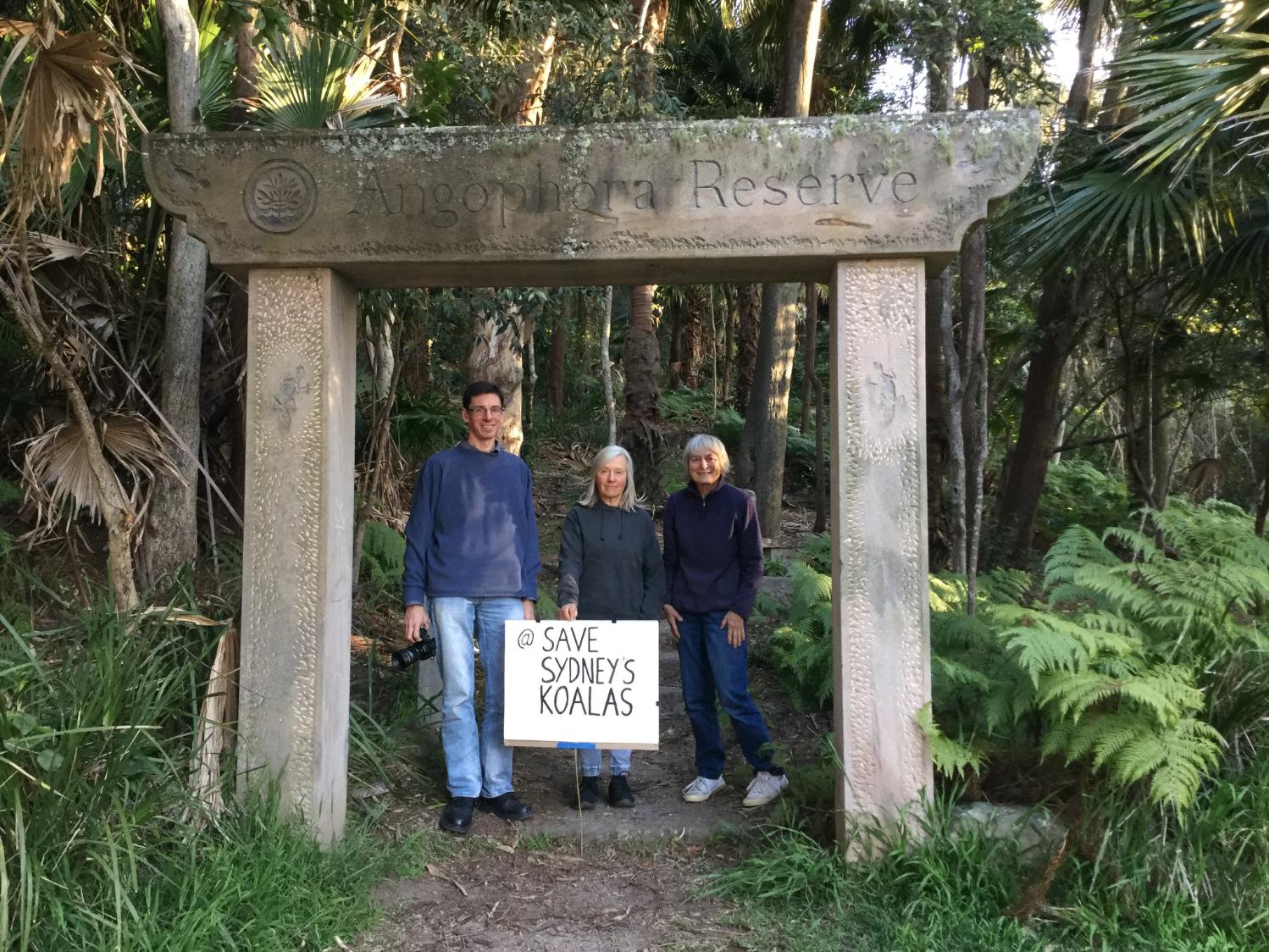
Environmentalists are calling on the Pittwater community to join today’s state-wide actions to save koalas from extinction in NSW - a fate experienced by our local population.
The protests follow a recent Parliamentary Inquiry into Koala Populations and Habitat in NSW, which found that koalas will be extinct by 2050 unless urgent action is taken to protect them.
The report states that the biggest threats to the koala’s survival in this state is loss and fragmentation of habitat and it made 42 recommendations to safeguard them.
To put pressure on the NSW government to protect that habitat from development and logging, one of the actions staged by koala activists and environmental organisations will be a COVID-safe rally outside NSW MP Rob Stokes’ office at 11am today.
Local residents are encouraged to join the protest to reinforce the message for Mr Stokes, Premier Gladys Berejiklian and Environment Minister Matt Kean.
Environmentalist and former koala handler John Illingsworth is supporting the day of action, having already joined a protest targeting Mr Stokes in Mona Vale on Friday.
Mr Illingsworth, who grew up in Pittwater at a time when koalas were “relatively common”, was an animal handler for the Skippy television program based at the former Waratah Park at Terrey Hills. He cared for a number of koalas during that time.
“There’s no more iconic animal in Australia than the koala,” Mr Illingsworth told Pittwater Online News.
Mr Stokes, as Planning Minister and former environment minister, should understand how koalas became extinct on the Barrenjoey peninsula, and would also be old enough to remember when koalas lived here, Mr Illingsworth said.
“It’s my opinion that Rob Stokes would not want to be the person who saw the extinction of the koala in NSW – which is going to happen by 2050 unless he protects all the land with viable colonies in NSW.'' Mr Illingsworth stated.
Mr Illingsworth was particularly concerned about a chlamydia-free colony at Campbelltown, in south-west Sydney, which is threatened by the NSW government’s plans associated with development of the new Western Sydney Airport.
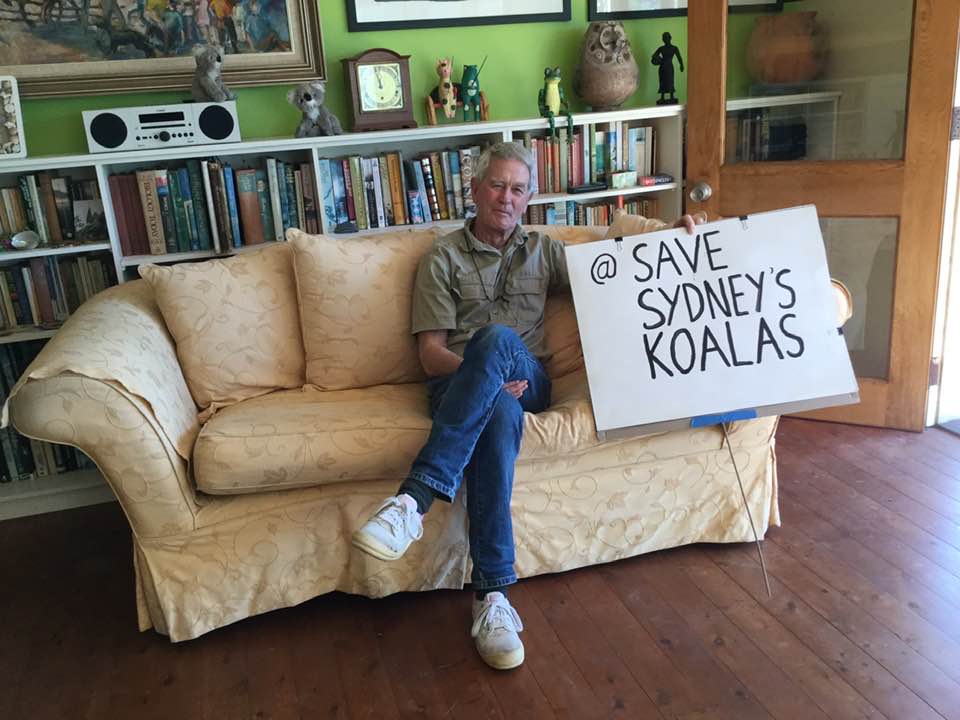
John Illingsworth - photo supplied
Greens environmental activist Pru Wawn said that the recent bushfires have pushed koala populations to the brink, with 80 per cent of their habitat destroyed in some areas.
“We lost our last few koalas in Pittwater some years ago after traffic and introduced species like dogs hastened their demise,” Ms Wawn said yesterday.
“Once again, urban growth and logging in regional areas is threatening this treasured species.
“Unless some serious measures are put in place like wildlife corridors and a designated NSW koala park, by 2050 they will be lost forever.”
Koala survival is a poignant issue for many in Pittwater, where long-time residents can remember the marsupials living in their gardens.
However, a 1970 survey discovered the population had declined to 123 animals and only about six were recorded in 1989. The last known sighting was in Avalon in 2006.
Ecologists say their demise was due to increasing development fragmenting their habitat and forcing them to face dangers on the ground - such as cars and dogs – while they moved between trees.
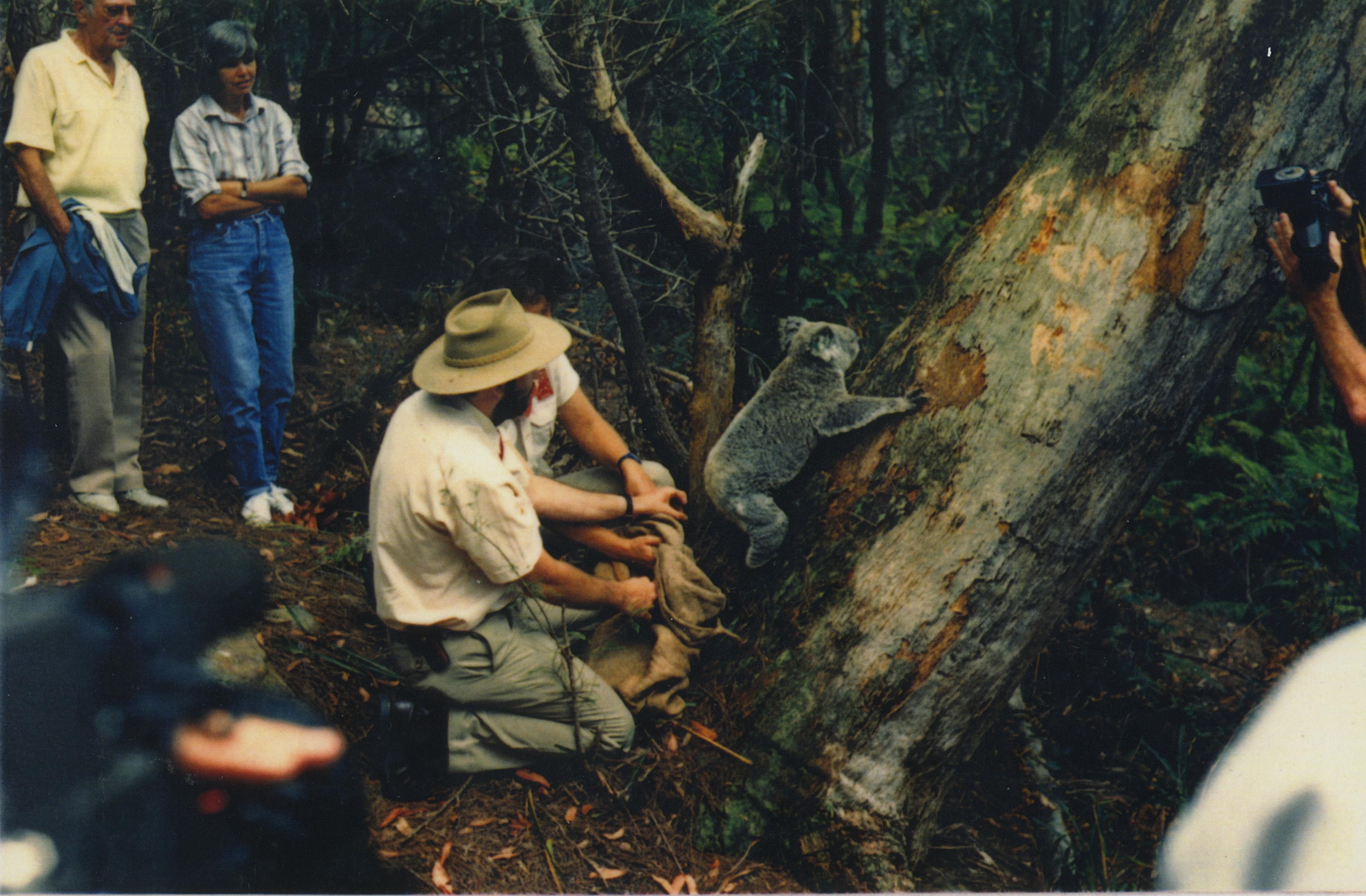
The release of an 8 years old female back into Angophora Reserve after she had been bombarded by magpies. Taronga Zoo picked her up and nursed her back to health before the release on November 5th, 1989. Doug Bladen and Marita Macrae are in the background representing the Avalon Preservation Trust (now APA). Photo by Geoff Searl OAM
Pittwater community members on Wednesday suspended a sign across the Seaforth approach to the Spit Bridge, encouraging motorists to contact Mr Stokes as Planning Minister, asking him to take action.
On Friday morning, Mr Illingsworth, Ms Wawn and others conducted a small COVID-safe rally near Mr Stokes office at Mona Vale, with four people in koala suits and the same banner.
For anyone joining the Mona Vale protest outside 1,725 Pittwater Road, Mona Vale, please bring your own face mask to wear and ensure you stay two metres away from others. Optional: Wear brown and green clothes to symbolise trees. Locals are also invited to join a social media storm today (Sunday) from 10am to 6pm.
